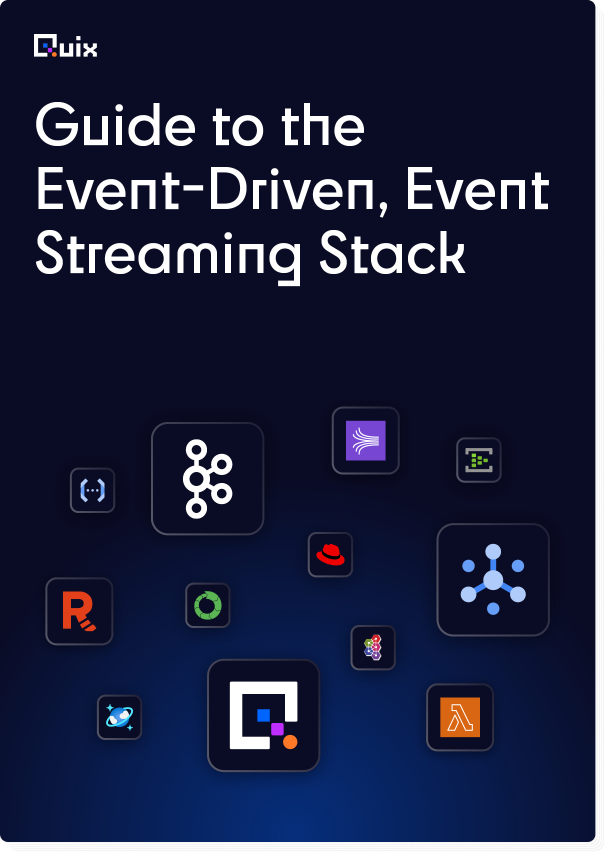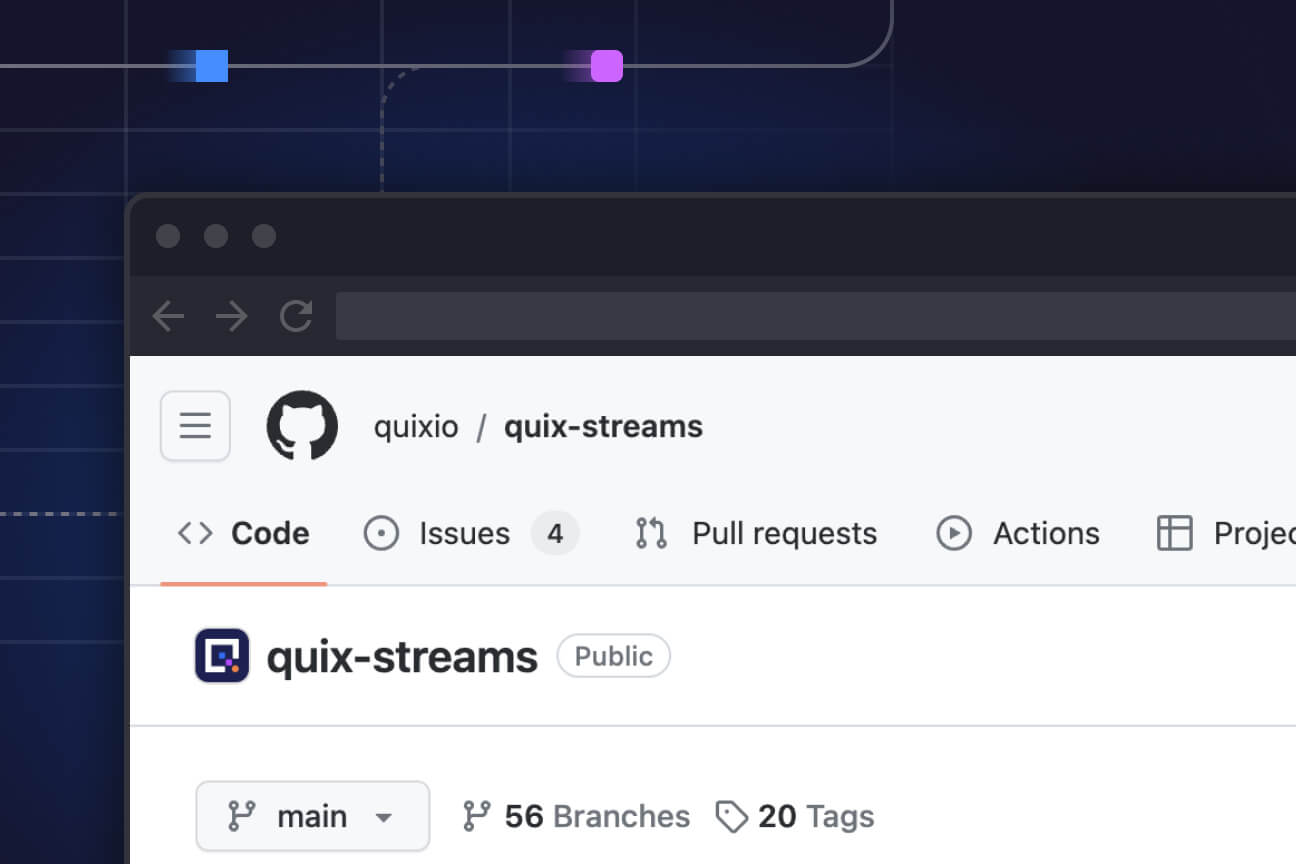How to launch personalized wearable devices 300% faster
Consumer IoT devices need real data to build hyper-personalized user experiences. So how did one company launch a fully functional product without months of R and D?

Stream processing enables hyper-personalization and a better user experience
The internet of things is a tidal wave of data that hits the creators of connected experiences especially hard. That’s why, when one international consumer products company planned to launch a new IoT device, it approached Quix, the stream processing platform; Inter/State, the London-based creative agency; and a leading technology company.
The mission-critical date was the launch of a consumer device — redacted for competitive reasons — which would both stream and process data from the user, and deliver analytics to the consumer products company*, with data used to enhance and personalize the user’s experience.
The challenge: Launching fast on complex data architecture
The consumer products company didn’t have sufficient data architecture to handle stream processing from its new device, and this architecture typically takes years for well-equipped teams to build.
On top of that, it risked missing out on months worth of data after the product launched as it created machine learning models and analytics from the early adopters.
“The solution collapsed an estimated year’s worth of engineering effort into just a fraction of that time.”
Quix offered a solution that collapsed what an estimated year’s worth of engineering effort — four months each of infrastructure setup, data gathering, and model building and implementation — into just a fraction of that time.
Quix provided ready-to-use infrastructure to eliminate the first step of infrastructure setup. Steps two and three, data gathering and model building, were run in parallel, with Quix enabling data scientists to build stream processing pipelines before the hardware was in production.
As a result, the consumer products company could immediately use the data as soon as it started streaming in from the newly launched connected devices.
“We make all of our decisions using data,” said the technology company leader. It routinely builds and implements data-driven systems, creates dashboards and gives training courses to its client companies. The technology company coordinated the solution in collaboration with Quix and Inter/State.
The challenge for the consumer products company was to create a digital device that could deliver a more personalized experience. The market for smart devices such as wearables, handhelds, trackers and buttons is exploding — and while many gather data, few efficiently process it to elevate the customer experience.
The solution: A streaming data pipeline enables automation
Despite its size and sophistication, the consumer products company’s R and D group had no capabilities to consume streaming data. They were literally emailing excel files of data collected during hardware development test sessions.
“The team needed to be able to ingest data, clean and process it, then automate actions and extract valuable insights from it.”
This nearly paralyzed the team because it was impossible to build digital features for the new device without a data automation system. The team needed to be able to ingest data, clean and process it, then automate actions and extract valuable insights from it. The project needed a data pipeline, and it simply didn’t exist.
Early versions of the smart device would be put on field trials to generate representative data for analytics and machine learning back in the lab. But this would take time, so the team also used synthetic data (also called simulation data).
They built a production-ready stream processing pipeline on Quix’s platform. This enabled them to ingest synthetic data into a representative environment for building and testing machine learning models, and then extend the same environment to serve the field trial and production data.
The ML models were used to categorize behavior based on users’ habits and interaction with the product. This helped to create personas — an essential touchstone for personalizing sales and marketing programs, as well as product development.

Data is ingested at two locations: synthetic data to develop the machine learning models, and real data to validate them on real-world data.
“We did all of this in a 4-month window when we knew we wouldn’t have live data,” said Mike Rosam, CEO of Quix. He explained that live data tends to be messy, out of order or coming in bursts, so it’s necessary to test production ML models on a legitimate simulation of representative data. “By testing on representative data, we could be sure that when the device launched, the stream processing pipeline would work correctly from the beginning.”
“With Quix, on day one in the market, the real-time models worked.”
Without Quix, the consumer products company would likely have to wait months until the physical devices had been on the market long enough. “With Quix, on day one in the market, the real-time models worked,” Rosam said.
The results: Accelerated time to market with zero data lost
By parallelling development steps, the data stream processing infrastructure supported development through its full lifecycle: R and D, pre-product testing and live release.
The outcome of this project included:
- 300% faster product delivery: Quix accelerated time to market, from an estimated 12 months to 4 months.
- Better product experience for users through hyper-personalization.
- No data lost from early adopters, because data processing was available from launch.
- Reduced costs associated with infrastructure setup and maintenance.
But the real test was making a smart device that automatically generated analytics.
“It’s hyper-personalization at scale. You’re treating every consumer as an individual, rather than grouping individuals into demographics.”
“The business outcome isn’t just personalization,” said Rosam. “It’s hyper-personalization at scale. You’re treating every consumer as an individual, rather than grouping individuals into demographics. Let’s face it: who wants to be categorized as a faceless member of a group? That doesn’t respect my individuality or personal needs.”
New opportunities: Building next-level products with stream processing
Because data and connectivity via smartphones has become so inexpensive, the opportunities for wearable devices have exploded. This was impossible when mobile data costs were high, but now there’s potential for IoT wearables to transmit an always-on live data feed, or to do so selectively with certain sync times, such as only when a device is plugged in and connected to wifi.
“The commercial vision is to use data to benefit your user, to make their life better,” Rosam said. “The data capture also offers continuous feedback to the consumer device company to help direct the product roadmap.” Opportunities to apply this technology include building personalized product offers that are fed back to the user to improve conversions.
This use case with Quix reveals how data pipelines can be managed more easily by defining the context of the data, such as a single user ID, to order it in streams. This initial data processing and cleaning makes all of the higher-level applications of automation and machine learning possible.
If you’re curious to learn more about how to apply a similar solution to your company, book a consultation with our technical experts or chat with others about streaming data in our Slack community.
*Editor’s note: This case study is an insider’s view on a major technology company’s collaboration with a global consumer products company to develop a product with data stream processing from Quix. For competitive reasons, the companies’ names cannot be disclosed publicly. Please request a private referral call for additional details.
What’s a Rich Text element?
The rich text element allows you to create and format headings, paragraphs, blockquotes, images, and video all in one place instead of having to add and format them individually. Just double-click and easily create content.
Static and dynamic content editing
A rich text element can be used with static or dynamic content. For static content, just drop it into any page and begin editing. For dynamic content, add a rich text field to any collection and then connect a rich text element to that field in the settings panel. Voila!
How to customize formatting for each rich text
Headings, paragraphs, blockquotes, figures, images, and figure captions can all be styled after a class is added to the rich text element using the "When inside of" nested selector system.

Check out the repo
Our Python client library is open source, and brings DataFrames and the Python ecosystem to stream processing.

Interested in Quix Cloud?
Take a look around and explore the features of our platform.

Interested in Quix Cloud?
Take a look around and explore the features of our platform.







